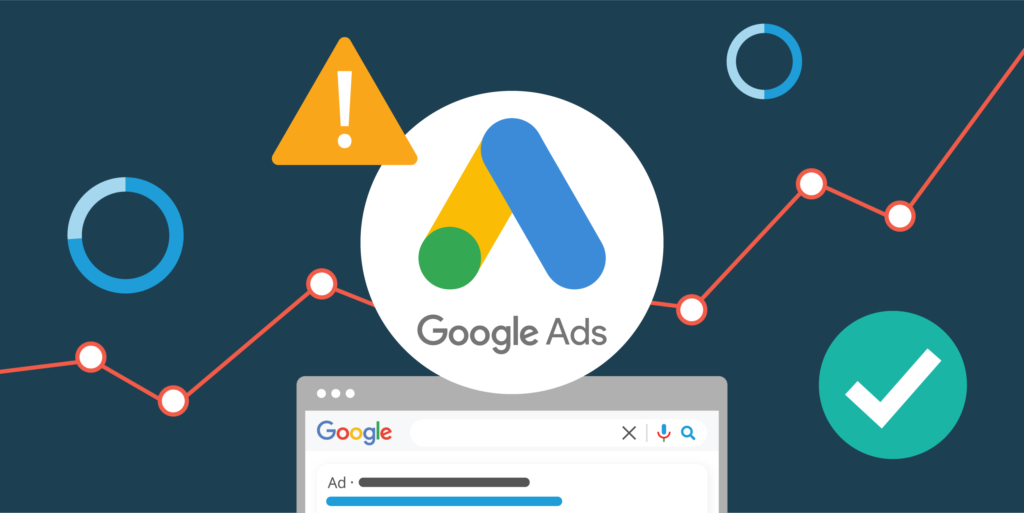Google Ads
One of the most effective and popular online advertising platforms in the world is Google Ads, formerly known as Google AdWords. It enables companies of all sizes to advertise their goods and services on millions of websites in the Google Display Network, as well as on YouTube, Gmail, and Google Search. Google Ads is a very powerful and outcome-driven advertising tool because it allows marketers to connect with potential clients at the precise moment they are looking for relevant information.
One of the biggest advantages of Google Ads is its vast reach. Google processes over 8.5 billion searches per day, and advertising through Google means your business can appear directly in front of users actively looking for what you offer. Whether it’s a local service or a global e-commerce product, Google Ads ensures that your message reaches the right people in the right place at the right time. This level of targeting makes it more efficient than traditional advertising channels like print, radio, or television.
Google Ads’ adaptability and control are two more important features. Search ads, display ads, video ads, shopping ads, and app promotion ads are just a few of the campaign types available to advertisers. Every one of these formats has a distinct function. For instance, video ads are displayed on YouTube, display ads show up as banners or other visual ads on websites, and search ads display text ads on search engine results pages (SERPs). With this multi-format approach, marketers can create a strategy that works for them.
Google Ads’ targeting options are among its best features. Companies can target users according to demographics, interests, device, location, language, keywords, and even past online activity. In order to increase conversion rates, this allows advertisers to divide up their audience and tailor their messaging. You can re-engage users who have visited your website but did not convert with Google Ads’ remarketing feature, which gives you another opportunity to convert interest into action.
Additionally, Google Ads uses a pay-per-click (PPC) business model, meaning you only have to pay when someone clicks on your advertisement. This guarantees that your investment is performance-driven and increases the transparency of budgeting. You can decide how much you’re willing to spend per click, set a daily or monthly budget, and track the effectiveness of your campaign in real time. This facilitates cost control and ROI (return on investment) optimization.
Google Ads also provides comprehensive analytics and insights. Businesses can monitor user behavior, conversion paths, bounce rates, and other metrics by integrating Google Analytics. Making better marketing decisions, improving campaigns, and comprehending customer journeys all depend on this data. Advertisers can continuously improve their campaigns with features like keyword performance analysis, conversion tracking, and A/B testing.
The application of AI and machine learning is one of Google Ads’ more recent features. Target CPA (Cost Per Acquisition), Target ROAS (Return on Ad Spend), and Maximize Conversions are just a few of Google’s clever bidding techniques that automate the bidding process to get the best results based on your objectives. To make sure your ads are seen by people who are most likely to convert, these tools evaluate millions of data points in real time.
To sum up, Google Ads is a flexible and effective digital marketing tool that provides unparalleled reach, accurate targeting, real-time data, and quantifiable outcomes. Google Ads offers the resources and adaptability required to meet your objectives, whether they are to increase website traffic, generate leads, increase sales, or establish brand awareness. Businesses can use this platform to unlock enormous growth opportunities if they have a well-thought-out plan, optimize consistently, and use data wisely. It’s more than just advertising; it’s profitable, intelligent, and scalable advertising that expands with your company.

Key Features of Google Ads:
Search Ads: Text ads that appear on Google search engine results pages (SERPs).
Display Ads: Visual or banner ads that appear on websites, apps, and YouTube.
Video Ads: Ads that play before, during, or after YouTube videos.
Shopping Ads: Product-based ads that show price, image, and store name directly on Google.
App Promotion Ads: Ads designed to drive downloads of mobile apps.
Benefits of Using Google Ads:
Precise Targeting: Target by location, language, age, device, interest, and user behavior.
Budget Flexibility: Set daily or monthly budgets as per your capacity.
Pay-Per-Click (PPC): You only pay when someone clicks on your ad.
Real-Time Analytics: Monitor performance instantly—clicks, impressions, conversions, etc.
Smart Bidding: Automated bidding strategies using AI and machine learning.
Important Tools & Terms:
Google Keyword Planner: Helps you find the right keywords for your ads.
Ad Extensions: Adds extra info like phone number, location, or links to your ad.
Quality Score: Google’s rating (from 1 to 10) of your ad’s quality and relevance.
CTR (Click-Through Rate): Percentage of people who clicked after seeing your ad.
Conversion Tracking: Measures how many users took action (like purchase or signup) after clicking your ad.
